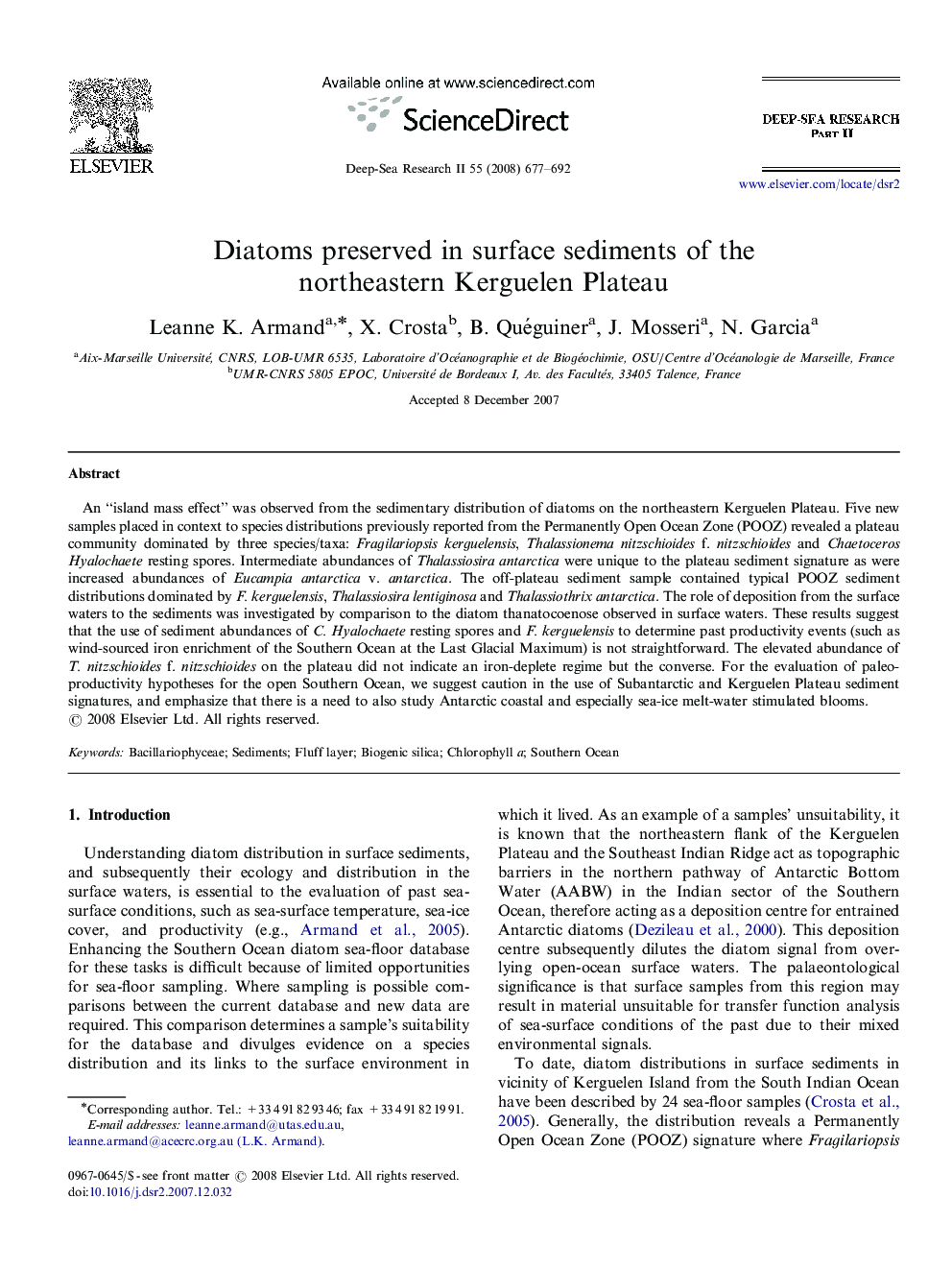| Article ID | Journal | Published Year | Pages | File Type |
|---|---|---|---|---|
| 4537511 | Deep Sea Research Part II: Topical Studies in Oceanography | 2008 | 16 Pages |
An “island mass effect” was observed from the sedimentary distribution of diatoms on the northeastern Kerguelen Plateau. Five new samples placed in context to species distributions previously reported from the Permanently Open Ocean Zone (POOZ) revealed a plateau community dominated by three species/taxa: Fragilariopsis kerguelensis, Thalassionema nitzschioides f. nitzschioides and Chaetoceros Hyalochaete resting spores. Intermediate abundances of Thalassiosira antarctica were unique to the plateau sediment signature as were increased abundances of Eucampia antarctica v. antarctica. The off-plateau sediment sample contained typical POOZ sediment distributions dominated by F. kerguelensis, Thalassiosira lentiginosa and Thalassiothrix antarctica. The role of deposition from the surface waters to the sediments was investigated by comparison to the diatom thanatocoenose observed in surface waters. These results suggest that the use of sediment abundances of C. Hyalochaete resting spores and F. kerguelensis to determine past productivity events (such as wind-sourced iron enrichment of the Southern Ocean at the Last Glacial Maximum) is not straightforward. The elevated abundance of T. nitzschioides f. nitzschioides on the plateau did not indicate an iron-deplete regime but the converse. For the evaluation of paleo-productivity hypotheses for the open Southern Ocean, we suggest caution in the use of Subantarctic and Kerguelen Plateau sediment signatures, and emphasize that there is a need to also study Antarctic coastal and especially sea-ice melt-water stimulated blooms.
